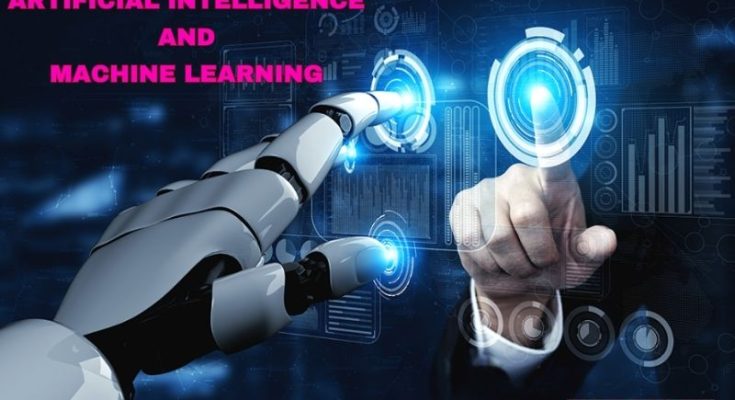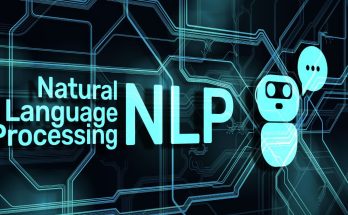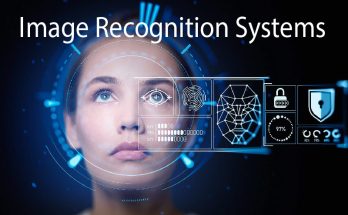Artificial Intelligence and Machine Learning: Understanding
Artificial Intelligence and Machine Learning are two terms that have gained significant attention in recent years. AI refers to the development of computer systems that can perform tasks that would typically require human intelligence, such as speech recognition, decision-making, and problem-solving. On the other hand, ML is a subset of AI that focuses on the development of algorithms and models that enable computers to learn from data and improve their performance over time.
The importance of AI and ML in today’s world cannot be overstated. These technologies have the potential to revolutionize various industries, including healthcare, finance, transportation, and manufacturing. They can automate repetitive tasks, enhance decision-making processes, and uncover valuable insights from vast amounts of data. As a result, organizations that embrace AI and ML can gain a competitive edge and drive innovation in their respective fields.

The Difference between Artificial Intelligence and Machine Learning
While AI and ML are often used interchangeably, they are not the same thing. AI is a broader concept that encompasses the development of intelligent systems capable of mimicking human intelligence. It involves various techniques such as natural language processing, computer vision, and expert systems. On the other hand, ML is a specific approach within AI that focuses on enabling computers to learn from data without being explicitly programmed.
To illustrate the distinction between AI and ML, consider the example of a self-driving car. The car’s ability to navigate through traffic, recognize road signs, and make decisions in real-time is an example of A
However, the algorithms that enable the car to learn from its environment and improve its driving performance over time are examples of ML.
These technologies are used in various industries to solve complex problems. For instance, in healthcare, AI can be used to analyze medical images and detect diseases at an early stage. In finance, ML algorithms can be employed to predict stock market trends and optimize investment strategies. The possibilities are endless, and the impact of AI and ML is only expected to grow in the coming years.
The History of Artificial Intelligence and Machine Learning
| Year | Event |
| 1950 | Alan Turing proposes the Turing Test as a measure of a machine’s ability to exhibit intelligent behavior equivalent to, or indistinguishable from, that of a human. |
| 1956 | John McCarthy, Marvin Minsky, Nathaniel Rochester, and Claude Shannon organize the Dartmouth Conference, widely considered the birth of AI as a field of study. |
| 1967 | The General Problem Solver (GPS) is developed by Allen Newell and Herbert Simon, which is a program that could solve a wide range of problems. |
| 1974 | The first expert system, MYCIN, is developed by Edward Shortliffe and Bruce Buchanan to diagnose and recommend treatment for bacterial infections. |
| 1986 | Geoffrey Hinton, David Rumelhart, and Ronald Williams publish a paper on backpropagation, a method for training artificial neural networks. |
| 1997 | IBM’s Deep Blue defeats world chess champion Garry Kasparov in a six-game match. |
| 2011 | IBM’s Watson defeats human champions on the quiz show Jeopardy! |
| 2012 | Google’s neural network, consisting of 16,000 computer processors, learns to recognize cats in YouTube videos without being explicitly programmed to do so. |
| 2016 | AlphaGo, developed by Google’s DeepMind, defeats world champion Lee Sedol in the ancient Chinese game of Go. |
| 2018 | OpenAI’s AI system, called OpenAI Five, defeats a team of professional human players in the video game Dota 2. |
The origins of AI can be traced back to the 1950s when researchers began exploring the concept of creating machines that could exhibit human-like intelligence. The term “artificial intelligence” was coined by John McCarthy, who organized the Dartmouth Conference in 1956, which is considered the birthplace of AI as a field of study.
Over the years, significant milestones have been achieved in the development of AI and ML. In 1956, Allen Newell and Herbert A. Simon developed the Logic Theorist, a computer program capable of proving mathematical theorems. In 1997, IBM’s Deep Blue defeated world chess champion Garry Kasparov, marking a significant milestone in AI’s ability to compete with human experts in complex games.
The field of ML has also seen remarkable progress. In the 1980s, researchers developed algorithms for training neural networks, which are models inspired by the structure and function of the human brain. In 2012, Geoffrey Hinton and his team at Google developed deep learning algorithms that achieved breakthrough performance in image recognition tasks.
How Artificial Intelligence and Machine Learning Work
At a high level, AI and ML systems work by processing large amounts of data and using algorithms to extract patterns and make predictions or decisions. In the case of ML, this process involves training a model on a labeled dataset, where the model learns to recognize patterns and make predictions based on examples provided.
The basic principles behind AI and ML involve data representation, feature extraction, model training, and inference. Data representation involves transforming raw data into a format that can be processed by algorithms. Feature extraction involves identifying relevant features or characteristics from the data that can be used to make predictions or decisions.
Model training is the process of optimizing the parameters of a model to minimize the difference between its predictions and the true values in the training data. This is typically done using optimization algorithms such as gradient descent. Once the model is trained, it can be used to make predictions or decisions on new, unseen data, a process known as inference.
Various algorithms and techniques are used in AI and ML, depending on the specific task and problem at hand. These include decision trees, support vector machines, neural networks, and deep learning algorithms. Each algorithm has its strengths and weaknesses, and the choice of algorithm depends on factors such as the complexity of the problem, the availability of data, and computational resources.
Types of Artificial Intelligence and Machine Learning
There are different types of AI and ML systems, each with its own strengths and weaknesses. One way to categorize AI is based on its level of autonomy. Weak AI refers to systems that are designed to perform specific tasks but lack general intelligence. Examples include voice assistants like Siri and Alexa. Strong AI, on the other hand, refers to systems that possess human-level intelligence and can perform any intellectual task that a human can do.
In terms of ML, there are several types of learning algorithms. Supervised learning involves training a model on labeled data, where each example is associated with a target value or class label. Unsupervised learning involves training a model on unlabeled data, where the goal is to discover hidden patterns or structures in the data. Reinforcement learning involves training a model to interact with an environment and learn from feedback in the form of rewards or penalties.
Each type of AI and ML has its own strengths and weaknesses. Weak AI systems are highly specialized and can perform specific tasks with high accuracy. However, they lack general intelligence and cannot adapt to new situations or learn new tasks without human intervention. Strong AI systems have the potential to exhibit human-like intelligence but are still largely theoretical and far from being realized.
Supervised learning is widely used in various applications, such as image recognition, natural language processing, and recommendation systems. Unsupervised learning is useful for tasks such as clustering, anomaly detection, and dimensionality reduction. Reinforcement learning is particularly suited for problems where an agent needs to learn how to make sequential decisions in an uncertain environment, such as playing games or controlling robots.
Applications of Artificial Intelligence and Machine Learning
AI and ML have found applications in a wide range of industries, revolutionizing the way businesses operate and providing new opportunities for innovation. In healthcare, AI is being used to analyze medical images, diagnose diseases, and develop personalized treatment plans. ML algorithms can analyze patient data to predict disease outcomes and optimize treatment strategies.
In finance, AI and ML are used for fraud detection, credit scoring, algorithmic trading, and risk management. These technologies can analyze vast amounts of financial data to identify patterns and anomalies that humans may miss. They can also make predictions about stock market trends and optimize investment portfolios.
In transportation, AI is being used to develop self-driving cars that can navigate through traffic and make real-time decisions. ML algorithms can analyze traffic patterns to optimize route planning and reduce congestion. These technologies have the potential to improve road safety, reduce fuel consumption, and enhance the overall efficiency of transportation systems.
Other industries that benefit from AI and ML include manufacturing, where these technologies are used for quality control, predictive maintenance, and supply chain optimization. In retail, AI is used for demand forecasting, inventory management, and personalized marketing. In education, AI is being used to develop intelligent tutoring systems that adapt to individual students’ needs and provide personalized feedback.
The benefits of AI and ML in these industries are numerous. They can automate repetitive tasks, improve decision-making processes, enhance productivity, reduce costs, and uncover valuable insights from data. By leveraging these technologies, organizations can gain a competitive edge and drive innovation in their respective fields.
Benefits of Artificial Intelligence and Machine Learning
The advantages of using AI and ML extend beyond specific industries. These technologies have a positive impact on society as a whole, improving the quality of life and driving economic growth. One of the key benefits is increased efficiency. AI and ML can automate tasks that would typically require human intervention, freeing up time for more complex and creative work. This leads to increased productivity and allows organizations to focus on higher-value activities.
Another benefit is improved decision-making. AI and ML systems can analyze vast amounts of data and extract valuable insights that humans may miss. This enables organizations to make more informed decisions, optimize processes, and identify new opportunities for growth. For example, in healthcare, AI can analyze patient data to predict disease outcomes and recommend personalized treatment plans, leading to better patient outcomes.
AI and ML also have the potential to address some of the world’s most pressing challenges. For instance, in agriculture, these technologies can optimize crop yields, reduce water consumption, and minimize the use of pesticides, contributing to sustainable food production. In energy, AI can optimize power grids, predict energy demand, and enable the integration of renewable energy sources, leading to a more efficient and sustainable energy system.
Furthermore, AI and ML have the potential to improve accessibility and inclusivity. Voice assistants like Siri and Alexa enable people with disabilities to interact with technology using their voice. ML algorithms can translate languages in real-time, breaking down language barriers and facilitating communication between people from different cultures. These technologies have the power to bridge gaps and create a more inclusive society.
Challenges and Risks of Artificial Intelligence and Machine Learning
While the benefits of AI and ML are significant, there are also challenges and risks associated with these technologies. One of the main challenges is data quality. ML algorithms rely on large amounts of high-quality data to learn patterns and make accurate predictions. However, obtaining such data can be challenging, especially in industries where data is scarce or sensitive.
Another challenge is algorithmic bias. ML algorithms learn from historical data, which may contain biases and reflect societal inequalities. If these biases are not addressed, ML algorithms can perpetuate and amplify existing biases, leading to unfair outcomes. For example, biased algorithms used in hiring processes can result in discrimination against certain groups of people.
Privacy and security are also major concerns. AI and ML systems often require access to sensitive data, such as personal health records or financial information. If not properly protected, this data can be vulnerable to breaches and misuse. Additionally, the use of AI in surveillance and facial recognition technologies raises concerns about privacy and civil liberties.
Moreover, there is a risk of job displacement due to automation. AI and ML have the potential to automate tasks that were previously performed by humans, leading to job losses in certain industries. While new jobs may be created as a result of these technologies, there is a need for retraining and upskilling the workforce to adapt to the changing job market.
Ethics and Artificial Intelligence and Machine Learning
The development and use of AI and ML raise important ethical considerations. These technologies have the potential to impact individuals, communities, and society as a whole. It is crucial to ensure that they are developed and used in a responsible and ethical manner.
One ethical concern is transparency. ML algorithms can be complex and difficult to interpret, making it challenging to understand how they make decisions or predictions. This lack of transparency can lead to distrust and raise questions about accountability. There is a need for transparency in the development and deployment of AI and ML systems to ensure that they are fair, unbiased, and accountable.
Another ethical consideration is fairness. As mentioned earlier, ML algorithms can perpetuate biases present in the data they are trained on. This can result in unfair outcomes, such as discrimination in hiring or lending decisions. It is important to address these biases and ensure that AI and ML systems are fair and equitable.
Privacy is another key ethical concern. AI and ML systems often require access to personal data, raising questions about consent, data protection, and surveillance. It is essential to establish clear guidelines and regulations to protect individuals’ privacy rights and ensure that data is used responsibly.
Moreover, there are concerns about the impact of AI and ML on employment. As these technologies automate tasks that were previously performed by humans, there is a risk of job displacement. It is important to consider the social and economic implications of automation and develop strategies to mitigate the negative effects on workers.
Future of Artificial Intelligence and Machine Learning
The future of AI and ML is promising, with numerous potential developments on the horizon. One area of focus is explainable AI, which aims to make AI systems more transparent and interpretable. Researchers are working on developing techniques that can explain how AI systems make decisions or predictions, enabling users to understand and trust these systems.
Another area of interest is reinforcement learning, which has shown great potential in training agents to perform complex tasks in dynamic environments. Researchers are exploring ways to improve the efficiency and scalability of reinforcement learning algorithms, making them applicable to a wider range of real-world problems.
Furthermore, there is growing interest in the field of generative AI, which focuses on creating AI systems that can generate new content, such as images, music, or text. Generative models like GANs (Generative Adversarial Networks) have already demonstrated impressive capabilities in generating realistic images and videos. The development of more advanced generative models could have significant implications for various industries, including entertainment, design, and advertising.
In addition, the integration of AI and ML with other emerging technologies such as robotics, Internet of Things (IoT), and blockchain holds great potential for innovation. For example, AI-powered robots can perform complex tasks in manufacturing or healthcare settings, IoT devices can collect and analyze data in real-time, and blockchain can provide secure and transparent data sharing.
The future of AI and ML will also be shaped by advancements in hardware and computing power. As technology continues to evolve, more powerful processors and specialized hardware accelerators will enable faster and more efficient AI computations. This will open up new possibilities for AI and ML applications, making them more accessible and affordable.
Understanding the Importance of Artificial Intelligence and Machine Learning
In conclusion, AI and ML are transformative technologies that have the potential to revolutionize various industries and improve the quality of life for individuals. They enable computers to perform tasks that would typically require human intelligence, automate repetitive tasks, enhance decision-making processes, and uncover valuable insights from data.
While AI and ML offer numerous benefits, they also present challenges and risks that need to be addressed. These include data quality, algorithmic bias, privacy concerns, job displacement, and ethical considerations. It is crucial to develop and use these technologies in a responsible and ethical manner, ensuring transparency, fairness, privacy protection, and accountability.
The future of AI and ML is promising, with ongoing research and development in areas such as explainable AI, reinforcement learning, generative AI, and the integration with other emerging technologies. As these technologies continue to evolve, it is important for individuals, organizations, and policymakers to understand their potential impact on society and work together to harness their benefits while mitigating their risks.
In today’s world, understanding AI and ML is essential for individuals and businesses alike. AI and ML technologies are revolutionizing industries such as healthcare, finance, and marketing, making it crucial for professionals to have a basic understanding of how these technologies work. By familiarizing themselves with AI and ML concepts, individuals can stay competitive in the job market and businesses can leverage these technologies to improve efficiency, make data-driven decisions, and gain a competitive edge. Additionally, understanding AI and ML can help individuals and businesses adapt to the rapidly changing technological landscape and stay ahead of the curve.



